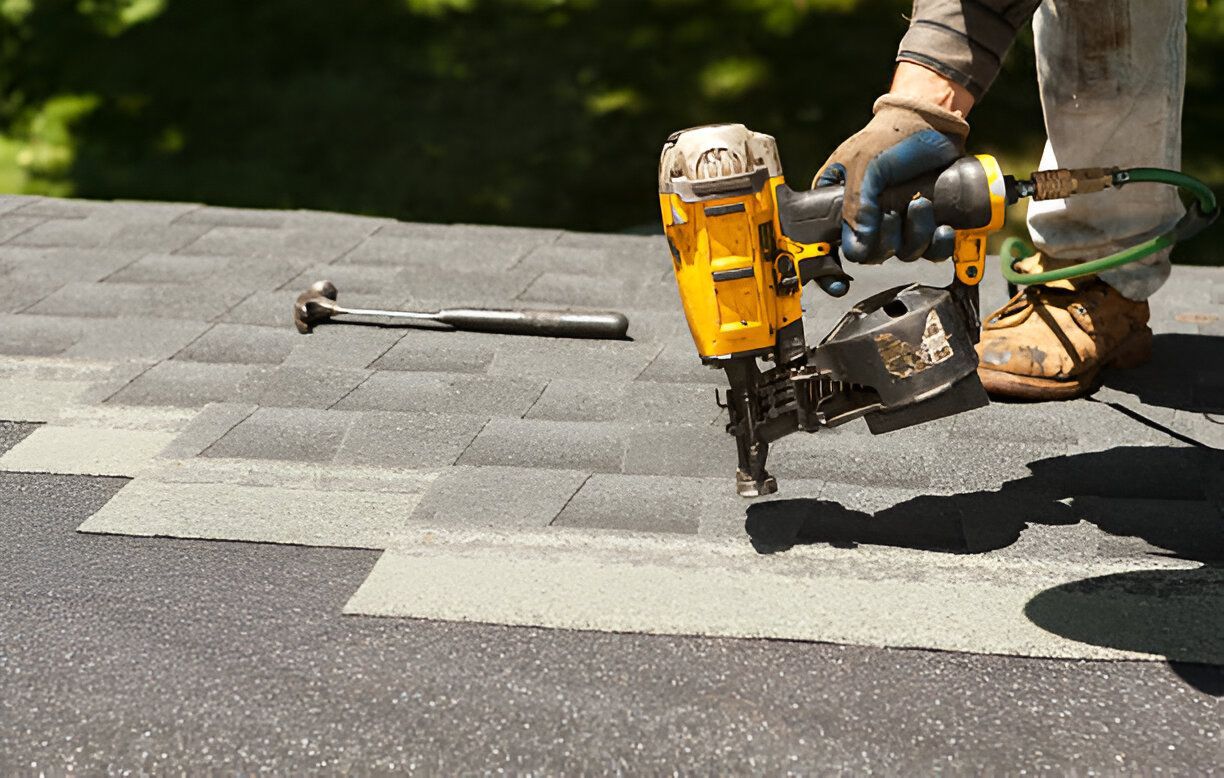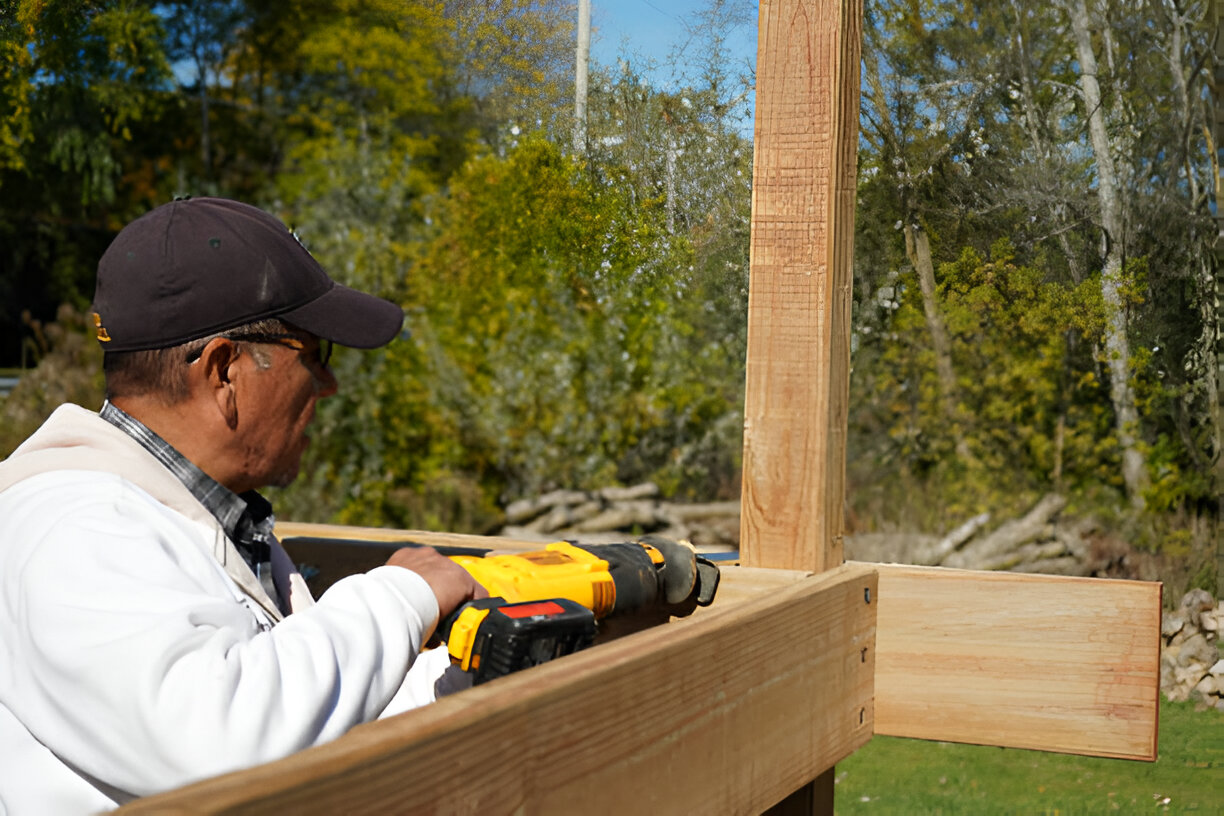Vinyl vs Cedar Siding: What’s Better for Vermont Homes?
Choosing the right siding for your Vermont home is more than an aesthetic decision—it's about longevity, insulation, climate compatibility, and cost. Vermont homeowners are often caught between the rustic charm of cedar siding and the modern efficiency of vinyl. To make the best choice for your home and budget, it's important to work with trusted experts like A1 Property Services, who understand Vermont’s unique weather challenges and can guide you toward the most durable and energy-efficient siding solution.
Understanding Vermont’s Siding Needs
The Impact of Vermont’s Climate on Siding Materials
Vermont’s climate presents a unique challenge for homeowners when selecting siding. With harsh winters, heavy snowfall, spring thaws, and humid summers, siding must do more than just look good—it must perform year-round. Materials are frequently exposed to moisture, wind, and extreme temperature shifts. Choosing siding that resists wear and maintains its integrity through every season is essential. Partnering with experienced professionals like
A1 Property Services ensures your siding can stand up to Vermont’s demanding environment.
Importance of Insulation and Energy Efficiency
In Vermont’s colder climate, energy efficiency isn’t just a bonus—it’s a necessity. Siding with built-in insulation can serve as a thermal shield, reducing heat loss during frigid winters and keeping interiors cooler in the summer. When combined with high-quality underlayment, insulated siding enhances comfort and significantly lowers heating and cooling costs. Investing in energy-efficient siding is a smart, long-term decision for your wallet and the planet.
A1 Property Services offers siding solutions that prioritize both performance and sustainability.
Freeze-Thaw Cycles and Their Effect on Exteriors
One of the biggest threats to siding in Vermont is the repeated cycle of freezing and thawing. When moisture seeps into siding materials and temperatures drop, the water expands—causing cracks, warping, or even structural failure. As temperatures rise again, melted ice can introduce mold or rot. This cycle takes a serious toll on unprotected or low-quality siding. That’s why it’s crucial to choose materials—and an installation team—capable of resisting moisture and temperature extremes.
A1 Property Services installs weather-resistant siding that’s built to last through every freeze-thaw season.
Vinyl Siding in Vermont
What Is Vinyl Siding Made Of?
Vinyl siding is primarily made from polyvinyl chloride (PVC), a durable plastic material specifically designed for long-term weather resistance. Modern vinyl panels often include insulation backing for added thermal protection and feature UV-resistant coatings to prevent fading from sun exposure. Its engineered composition makes it a practical, long-lasting choice for Vermont homeowners seeking low-maintenance exteriors.
Benefits: Cost, Low Maintenance, and Rot Resistance
Vinyl siding is known for being budget-friendly without sacrificing durability. It doesn’t require painting, staining, or sealing, which reduces long-term maintenance costs. In addition, vinyl is highly resistant to rot, mildew, and insect damage—key advantages in Vermont's damp and changing seasons. For homeowners looking to balance cost and performance, vinyl is a smart solution.
Energy Efficiency Ratings in Vermont Climates
For colder regions like Vermont, energy efficiency is a top concern. Insulated vinyl siding options, such as those offered by CertainTeed, provide high R-values that align with Vermont’s energy codes. These products create an effective thermal barrier around the home, helping to retain heat in winter and cut down on utility bills. Investing in energy-efficient siding is a step toward a warmer, more cost-effective home.
Color and Style Options from CertainTeed
One of vinyl siding's biggest strengths is its versatility in color and style. CertainTeed offers a wide variety of fade-resistant finishes, textures, and profiles—including traditional lap, Dutch lap, and board and batten. These options allow homeowners to match the historical charm or modern appeal of their Vermont home. With so many design choices, it’s easy to find a look that enhances curb appeal.
Performance During Harsh Winters
Vinyl siding performs exceptionally well in Vermont’s severe winters. It has the flexibility to expand and contract with temperature fluctuations, helping prevent cracks or damage. Its smooth surface naturally sheds snow and ice, reducing the risk of buildup or moisture infiltration. For siding that can handle subzero temperatures with ease, consider expert installation by
A1 Property Services—Vermont’s trusted siding specialists.
Cedar Siding for New England Homes
Natural Aesthetic Appeal and Insulation Properties
Cedar siding is prized for its rich, warm tones and authentic wood grain, offering a timeless look that blends perfectly with Vermont’s scenic surroundings. It’s often the top choice for homeowners restoring historic properties or aiming for a rustic, natural aesthetic. Beyond beauty, cedar provides inherent insulation, helping to regulate indoor temperatures year-round. Its natural oils offer some resistance to decay and insects, adding to its appeal.
Required Maintenance and Treatment Schedules
While beautiful, cedar siding demands routine care to withstand Vermont’s wet, variable climate. To maintain its appearance and durability, cedar should be stained, painted, or sealed every 3–5 years. Neglecting this maintenance can lead to mold, mildew, UV discoloration, and eventual water damage. Homeowners must be ready to commit to a consistent care schedule to preserve cedar's benefits.
Susceptibility to Rot and Insect Damage
Despite its natural oils, cedar is still vulnerable to rot and insect infestations—especially when installed close to the ground or in heavily shaded, damp areas. Over time, moisture retention in these spots can invite wood-boring insects like carpenter ants or termites. Regular inspections and prompt repairs are necessary to extend the life of cedar siding in these conditions.
Cost and Longevity
Cedar siding carries a higher upfront cost and more frequent maintenance expenses than vinyl. However, with proper care, it can last 30 years or more and significantly boost curb appeal and resale value. The investment pays off in character and charm, especially for homeowners who appreciate craftsmanship and a natural finish.
Regional Sourcing and Sustainability
Cedar is often locally or regionally harvested in the Northeast, making it a more sustainable option with a smaller transportation footprint. As a renewable, biodegradable, and recyclable material, cedar appeals to environmentally conscious homeowners. For expert installation and advice on maintaining cedar siding in Vermont’s demanding climate, trust the professionals at
A1 Property Services
Code Compliance and Safety Considerations
Vermont’s Lead Encapsulation and Restoration Regulations
Renovating older homes in Vermont—particularly those built before 1978—requires adherence to state and federal lead safety regulations. Cedar siding is often favored in these cases because it allows for lead paint encapsulation, covering existing surfaces without disturbing hazardous materials. This minimizes health risks during restoration while preserving historical integrity. Choosing the right siding is not just about aesthetics but also about regulatory safety and compliance.
Historic Home Compliance with Cedar vs Vinyl
For homes located within historic districts or overseen by preservation commissions, siding choices may be limited. Vinyl, though efficient, is sometimes prohibited due to its non-traditional appearance and material composition. Cedar siding, on the other hand, is more likely to be approved because of its authenticity and compatibility with historical architecture. If you’re restoring a heritage property, cedar is often the safest route for regulatory and stylistic harmony.
Permitting Needs for Siding Replacement
Whether you choose cedar or vinyl, most Vermont municipalities require building permits for siding replacement projects. Permits help ensure compliance with local building codes, zoning laws, and historical preservation standards. A licensed and experienced contractor like
A1 Property Services can manage all aspects of permitting, inspections, and code compliance—streamlining the process for homeowners and ensuring your project stays on track.

A1’s Expertise in Siding Installation
Our Approach to Siding Prep and Wood Restoration
We don’t just install—we restore. At A1 Property Services, every siding project starts with a comprehensive assessment of your home’s exterior condition. We inspect for rot, moisture damage, and compromised substrate areas that can affect long-term siding performance. Once identified, we repair and restore these areas before any panels are installed. This meticulous preparation ensures maximum durability, protection, and beauty.
Matching CertainTeed Vinyl to Home Styles
Vinyl siding can be stylish and historically appropriate when done right. Our certified installers are experts in using CertainTeed vinyl products, offering a wide selection of fade-resistant colors and textures that suit Vermont’s traditional homes. Whether you're enhancing a farmhouse or a craftsman-style residence, we help you choose vinyl profiles—like clapboard or board and batten—that deliver visual harmony and modern protection.
Expert Handling of Cedar Clapboards and Stains
Cedar siding demands precision, and our team delivers it. We hand-select premium cedar clapboards, apply top-quality stains or sealants, and use professional techniques that reduce the risks of cupping, warping, or water infiltration. Every cedar installation is tailored to Vermont’s climate—balancing timeless beauty with functional performance. It's this commitment to detail that keeps cedar homes looking their best through every season.
Why Vermont Homeowners Trust A1
With over 30 years of experience and hundreds of successful projects across Chittenden County,
A1 Property Services has become the trusted name in Vermont for siding installation and restoration. Our dedication to quality, craftsmanship, and local expertise means your home gets siding that stands up to snow, wind, sun, and rain. From prep to final inspection, we ensure your siding not only lasts—but elevates your home’s appearance.
Conclusion: Which One Is Right for Your Home?
Both vinyl and cedar siding offer distinct advantages for Vermont homeowners. If you prioritize low maintenance, budget-friendliness, and winter resistance, vinyl siding is a solid pick—especially CertainTeed products installed by professionals like A1 Pro.
If you value natural beauty, historical accuracy, and are willing to maintain it, cedar siding delivers timeless appeal and eco-friendly benefits.
Still unsure? Reach out to our team for a free consultation to explore your options and get an expert recommendation.
Frequently Asked Questions (FAQ)
Q1: How often does cedar siding need to be treated in Vermont?
Every 3–5 years, depending on exposure and finish quality. Homes with high sun or moisture exposure may need more frequent treatment.
Q2: Can vinyl siding be installed in winter?
Yes, but it requires experienced installers due to expansion tolerances. A1 Pro ensures correct installation even in colder months.
Q3: Is vinyl siding energy-efficient enough for Vermont homes?
Absolutely, especially insulated vinyl options from CertainTeed. They enhance thermal resistance and meet Vermont energy codes.
Q4: What siding is best for historic homes in Burlington?
Cedar is typically favored for historical authenticity and compliance, though custom vinyl may be allowed in some areas.
Q5: Will either siding impact my home insurance?
Possibly. Fire resistance, maintenance needs, and durability may influence your premiums. Always check with your insurance provider.


